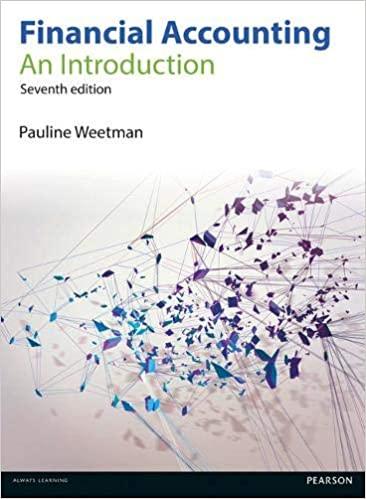Question
You are a consultant for Manfred Systems Incorporated, which manufactures equipment for small print shops. The CFO recently met to discuss refinancing long-term debt that


You are a consultant for Manfred Systems Incorporated, which manufactures equipment for small print shops. The CFO recently met to discuss refinancing long-term debt that is due and wanted to review possible options for Manfred Systems. The long-term debt in question is $10 million, which was used to purchase additional manufacturing equipment to meet consumer demand and streamline production, increasing efficiency and removing bottlenecks in the production process.
Financing details:
Debt to refinance = $10,000,000
Option 1: Reborrow the money from the Business Development Bank of Canada on a five-year basis with a flat rate of 8%. The loan balance would be due in five years, but the company must make annual interest payments to the bank.
Option 2: Borrow the money from RBC bank using short-term one-year loans; the first year would be at an interest rate of 6% per annum. If the company maintains a compensating balance of 10% of the loan, the interest rate will get lowered to 5.5% per annum (reduced by 0.5%).
The CFO is interested in the potential advantages of short-term borrowing to save on interest costs.
Required:
- How much would the company need to borrow to acquire the funds required at 5.5%? Note: The company would also need to borrow to cover the compensating balance requirement. (2 marks)
- Compare the cost of the one-year short-term loan if the company decides to borrow the funds at 6% or wants to borrow and leverage the rate of 5.5% if the compensating balance is covered. Which is less expensive? (5 marks)
- Compare the total costs of the long-term loan from the Business Development Bank of Canada with the short-term financing option if the following rates are available:
Year 1: 6%
Year 2: 8%
Year 3: 9%
Year 4: 9%
Year 5: 4%
Disregard the compensating balance requirement for this question. Which alternative would be best for the company? (6 marks)
- What are the advantages and disadvantages of short-term vs long-term financing? Are any other alternatives available to the company? If you were the CFO of the company, would you adopt a higher risk/reward financing policy or a more conservative financing policy? Explain in detail (at least 300 words). (3 marks)
Step by Step Solution
There are 3 Steps involved in it
Step: 1

Get Instant Access to Expert-Tailored Solutions
See step-by-step solutions with expert insights and AI powered tools for academic success
Step: 2

Step: 3

Ace Your Homework with AI
Get the answers you need in no time with our AI-driven, step-by-step assistance
Get Started


